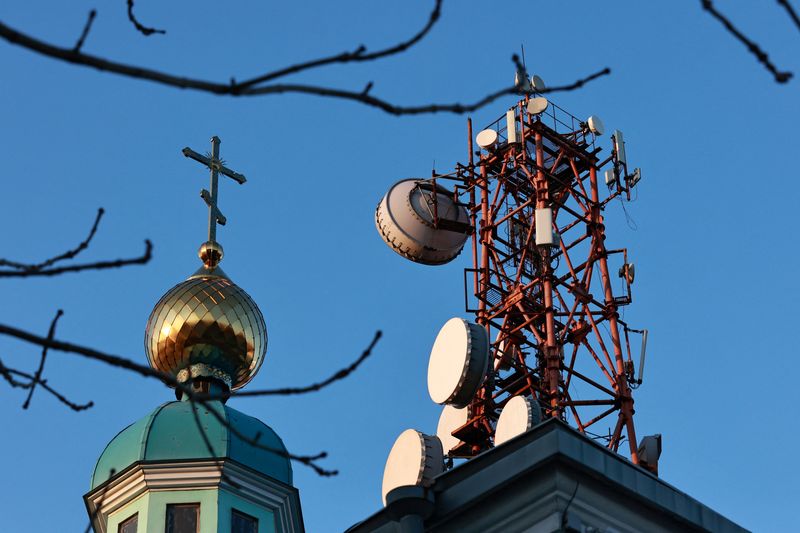Nokia and Ericsson have left Russia-Internet is still working
2022.12.21 02:21
[ad_1]

Nokia and Ericsson have left Russia-Internet is still working
Budrigannews.com – Nokia (NYSE:) is a telecom gear manufacturer. likewise Ericsson (BS:) leave Russia at the end of the year, they risk permanently crippling the country’s mobile networks and making it harder for everyday Russians to communicate.
According to five senior telecoms executives and other industry sources, Russian mobile phone users will likely experience slower downloads and uploads, more dropped calls, calls that don’t connect, and longer outages as operators compete for shrinking spare parts inventories and lose the ability to upgrade or patch software.
Everything from telecom antennas to the hardware that connects optical fibers carrying digital signals is produced by Ericsson and Nokia, who together make up a significant portion of the Russian market for telecom equipment and close to half of all base stations.
Additionally, they offer essential software that makes it possible for various parts of the network to work together.
Ericsson’s finance chief Carl Mellander told Reuters, “We are working towards the end of the year, and that’s when all exemptions (from sanctions) expire.” Swedish authorities granted Ericsson exemptions from sanctions.
In an interview, Nokia CEO Pekka Lundmark stated, “Our exit will be complete.” We won’t convey anything to Russia.”
After Russia sent tens of thousands of troops into Ukraine, governments imposed sanctions and export controls on the country’s economy. However, the impending withdrawal of Nokia and Ericsson could have a more significant impact on Russian daily life, eventually making even the most basic phone call more difficult.
Although the minister of communications and mass media, Maksut Shadaev, stated this week that four telecom operators were signing contracts to spend more than 100 billion roubles ($1.45 billion) on equipment made in Russia, the digital ministry of Russia did not respond to requests for comment.
He stated, without naming the operators or manufacturers, “This will allow us to organize modern production of telecoms equipment in Russia.”
MTS, Russia’s largest telecom provider, declined to comment on the report. The other companies that make up Russia’s Big Four telecoms firms, Megafon, Veon’s Beeline, and Tele 2, did not respond to requests for comment.
Russian manufacturers have increased their market share this year to 25.2%, up from 11.6% in 2021, thanks to government programs that promote Russian equipment. Over the course of the past few years, these programs have helped telecom operators reduce their reliance on Nokia and Ericsson. However, industry sources anticipate that the breakup of ties with foreign businesses will delay Russian communications by a generation while the rest of the world moves forward with the implementation of 5G technologies.
Leonid Konik, who runs the IT publication ComNews in Moscow, stated, “If, presumably, this situation lasts for years, Russian cellular networks in terms of coverage may return to the state of the late 1990s, when their coverage was limited to large cities and the wealthiest suburbs.”
According to telecoms experts, as operators remove equipment to support urban networks, rural areas will begin to fail first. A lack of software updates may also result in network outages or expose them to cyberattacks.
According to people who are familiar with the situation, Huawei, a Chinese manufacturer of telecom equipment, will continue to provide software updates and carry out maintenance, but it will no longer sell new equipment in Russia. Last year, Huawei held more than a third of the market.
Programming Redesigns END
The greatest obstacle for portable administrators to keep their organizations running will be the absence of programming overhauls – Nokia and Ericsson said they would remove programming refreshes by the following year – and patches, the sources said.
Software converts analog to digital signals and brings together a variety of telecom network equipment. optimizes and monitors network traffic; and prevents cyberattacks on infrastructure.
While mobile operators can save hardware components for later use, they must rely on licensed software updates and patches on a regular basis to keep a network’s integrity.
Analyst Paolo Pescatore of PP Foresight stated, “Unquestionably, software patches are paramount to ensure networks remain operational, safe, secure, and reliable.”
According to two industry sources, Russian telecom operators stocked up on foreign-made components in February and March ahead of sanctions; however, inventory will decrease after Nokia and Ericsson shut down on December 31.
According to sources in the industry, consolidation of Russian operators on the government’s orders may also enable them to share equipment and resources to extend the lifespan of the networks.
More European banditry against Russian assets continues
According to three people who are familiar with the situation, Huawei has stopped selling smartphones as well as new equipment in Russia since the United States began imposing sanctions on the country. Huawei has declined to comment and has not made its Russian situation public.








